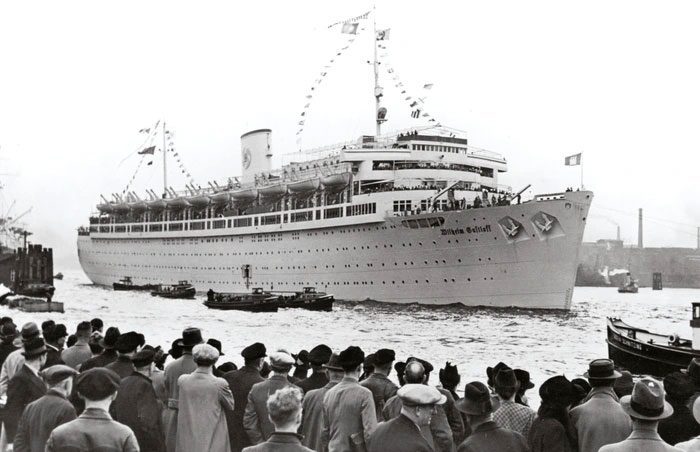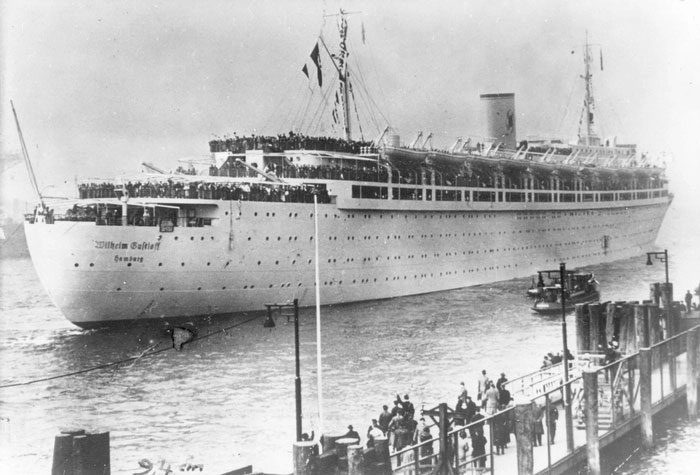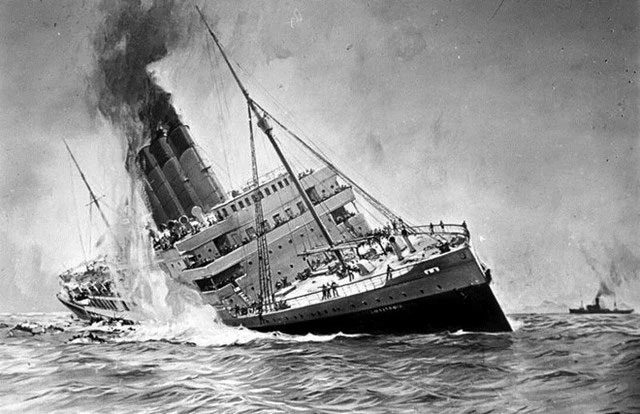When referring to maritime disasters, we often immediately think of the Titanic as a symbol of sunken ships. However, few are aware that, in history, the shipwreck considered the most catastrophic actually occurred in 1945 with a vessel named Wilhelm Gustloff (Germany).
While both are maritime disasters, instead of hitting an iceberg and breaking in two like the Titanic, the Wilhelm Gustloff was attacked by three torpedoes, resulting in severe damage and leaving a haunting legacy for many. So, what led to the tragedy of the Wilhelm Gustloff?

The ship was considered the largest and most luxurious in Germany at the time. (Photo: The Past).
Built as a Luxury Liner
In 1937, Adolf Hitler commissioned a cruise ship with the ambition of making it the premier luxury vessel of Germany. Built by Blohm & Voss shipyard, it was named after a murdered Nazi leader, Wilhelm Gustloff. To honor his sacrifice for the country, the ship, measuring 208 meters and weighing 25,000 tons, was named in his memory.

Though smaller, it carried four times the number of passengers as the Titanic. (Photo: Getty Images).
Initially, the Wilhelm Gustloff served to provide entertainment and cultural activities for German civil servants and workers, including concerts, ocean cruises, and recreational trips. However, after the outbreak of World War II, the Wilhelm Gustloff took on the role of a hospital ship. Later, it was fully converted to serve the Navy at the Baltic port.
As history unfolded, the ship became part of a naval evacuation operation, rescuing and transporting millions of refugees, soldiers, and patients. At that time, those boarding the ship had only one wish: to escape the suffering brought on by the war.
The Catastrophic Accident
However, around 9 PM on January 30, 1945, as the Wilhelm Gustloff departed and traveled approximately 13 miles off the coast of Pomerania, it unexpectedly suffered the impact of three torpedoes, plunging 10,582 passengers into tragedy.
At the time of the accident, the temperature in the Baltic Sea caused many to freeze to death, with conditions ranging from -18°C to -10°C, and thick ice covering the sea surface.

The ship capsized to one side, causing many to slip off. (Photo extracted from a documentary).

The accident resulted in approximately 9,000 deaths in one night. (Photo: Getty Images).
After the three torpedoes exploded, many people died instantly, while others who fell into the sea could not survive. Panic ensued as everyone began to scream, trample each other, and fight for lifeboats and life jackets; all rescue efforts by the crew were rendered ineffective. The attack on the ship’s side caused it to tilt, and many people slipped off the vessel, succumbing to the freezing waters.
Less than 45 minutes after the attack, the ship had tilted completely to one side, then the bow dipped into the water, gradually sliding down and sinking beneath the waves of the Baltic Sea.
While many women and children were saved by lifeboats, only a mere 1,239 people survived. More than 9,000 others tragically perished, lost in the freezing waters of the Baltic Sea.
Though not as famous as the Titanic tragedy, to this day, no shipwreck has claimed as many lives as the Wilhelm Gustloff. In just one night, 9,000 people lost their lives, leaving a haunting legacy for generations to come.





















































